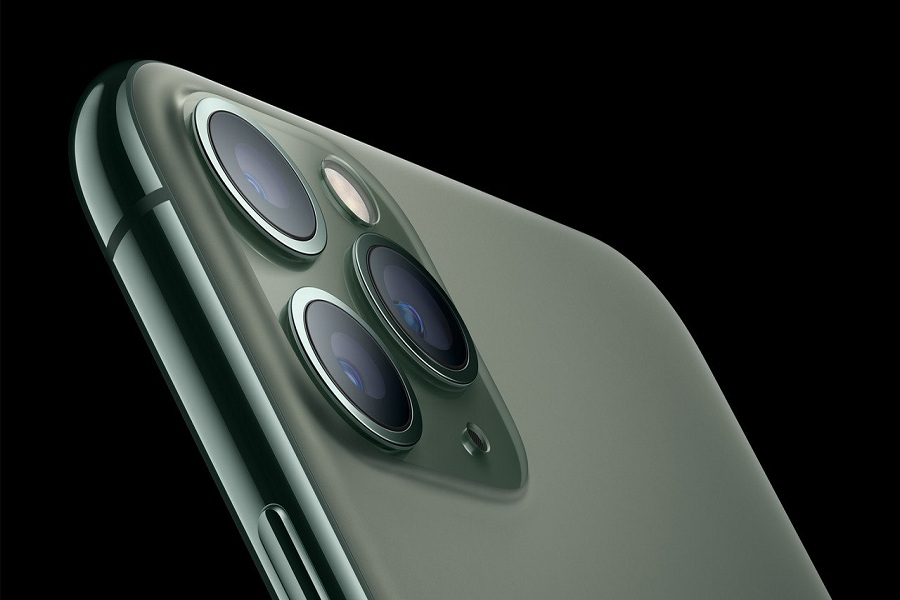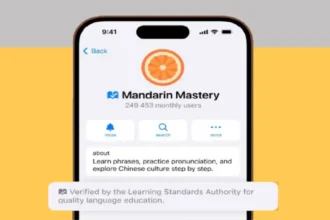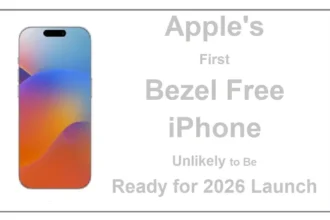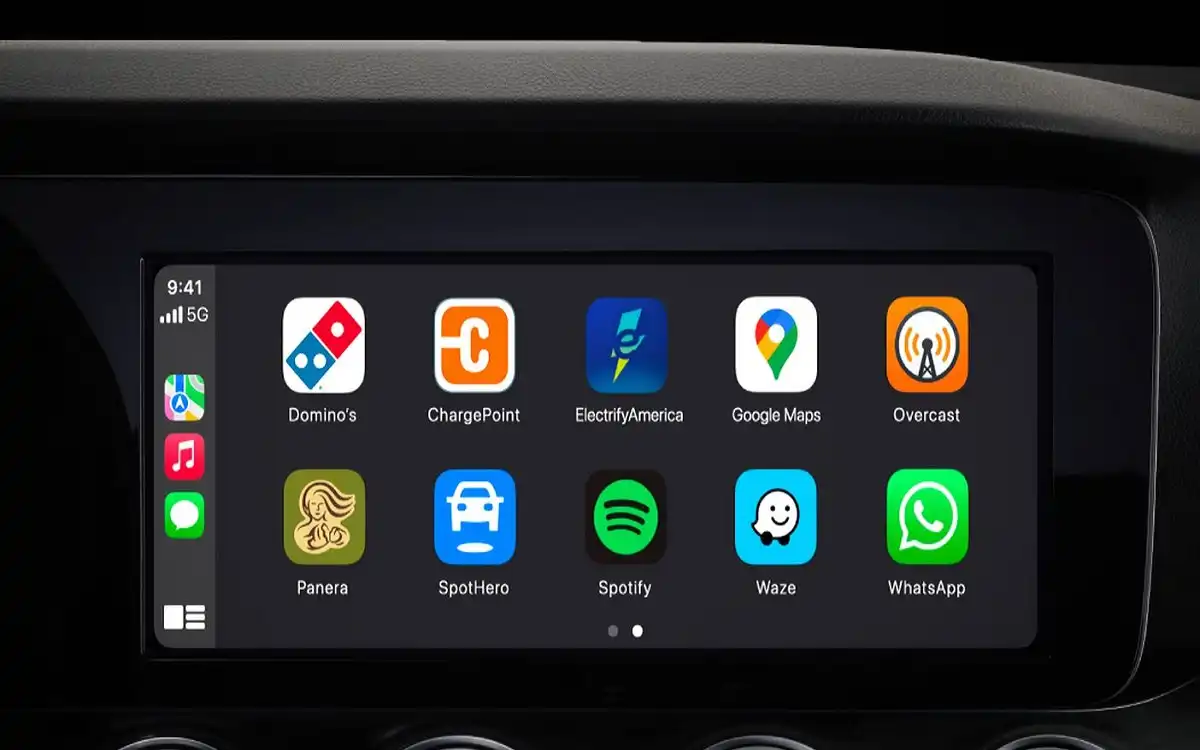Apple CarPlay JD Power Study has emerged as a game-changer, revolutionizing how drivers interact with their vehicles. This innovative system has not only enhanced the in-car experience but also significantly impacted consumer satisfaction. Let’s discuss what Considering Apple says about the world of Apple CarPlay JD Power Study with its benefits, challenges, and the future of in-car connectivity.
Recent Released: iCloud Private Relay Experiencing Outage [Tips and Tricks]
What is Apple CarPlay? A Brief Overview
Apple CarPlay is an intelligent interface that seamlessly integrates your iPhone with your vehicle’s infotainment system. It allows drivers to access various iPhone functionalities, including navigation, music streaming, messaging, and more, directly through their car’s built-in display. This integration aims to provide a safer, more convenient driving experience by minimizing distractions and keeping drivers focused on the road.
The Impact of Apple CarPlay on Vehicle Satisfaction
Recent findings from a J.D. Power study have shed light on the significant impact of Apple CarPlay on vehicle satisfaction among U.S. consumers.
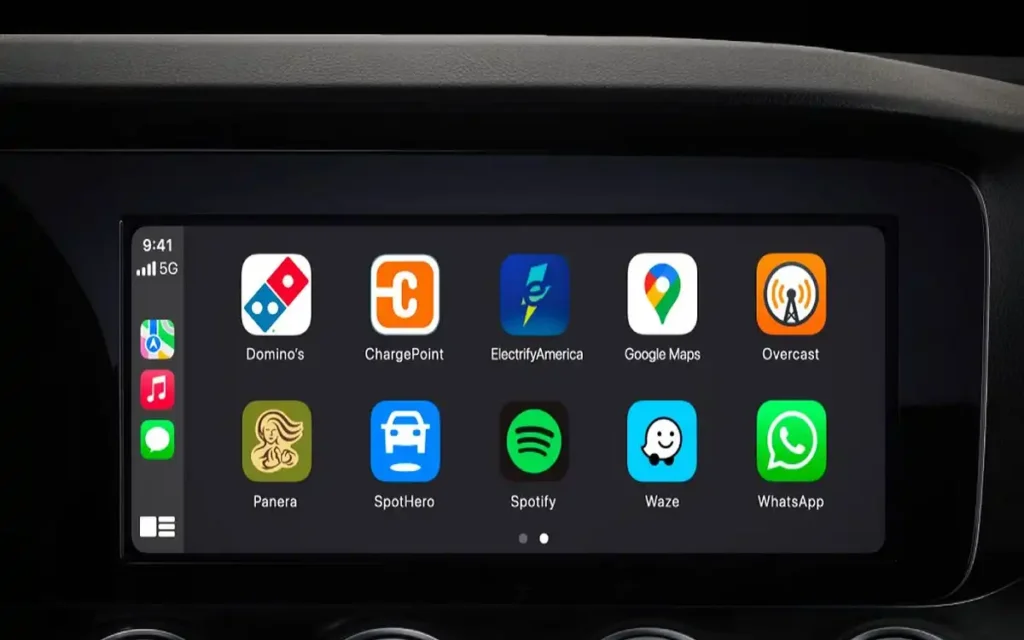
The study, which surveyed 99,144 owners of new 2024 model-year vehicles, revealed some fascinating insights:
Increased Overall Satisfaction
Vehicles equipped with Apple CarPlay contribute to higher overall satisfaction among drivers. The study found that satisfaction was notably higher among owners who use Apple CarPlay, scoring 840 on a 1,000-point scale, compared to the average satisfaction with in-vehicle infotainment systems, which scored 805.
Consumer Preference
The survey results clearly indicate a strong consumer preference for vehicles that support Apple CarPlay. This preference underscores the growing importance of advanced connectivity features in the modern driving experience.
Intuitive Control and Convenience
Apple CarPlay provides intuitive control options and a high level of convenience, allowing drivers to safely and efficiently use their iPhones with minimal distraction while driving. This enhanced usability translates to a genuine quality-of-life improvement for many drivers.
Common Challenges with Apple CarPlay
While Apple CarPlay has undoubtedly improved the in-car experience for many users, it’s not without its challenges. Understanding these issues can help users troubleshoot problems and manufacturers improve future iterations of the technology.
1. Connectivity Problems
One of the most frequent issues users face is related to connectivity:
- CarPlay Not Appearing: Sometimes, CarPlay fails to show up on the infotainment screen after connecting the iPhone.
- Frequent Disconnections: Users may experience initial connections that drop unexpectedly, interrupting their use of the system.
These issues often stem from faulty or low-quality USB cables, debris in the USB ports, or Bluetooth conflicts between devices.
2. App Crashes
Another common problem is related to app stability:
- Apps Closing Unexpectedly: Applications like Apple Maps or Spotify may crash while in use, leading to a disrupted experience.
- Freezing: Apps can become unresponsive, requiring users to restart them to regain functionality.
These issues can be caused by compatibility problems with certain apps and the iPhone’s iOS version, as well as low memory or processing power on the device.
3. Audio Problems
Audio-related issues can significantly impact the user experience:
- Distorted Audio: Users might hear crackling or popping sounds, or experience overall poor audio quality.
- No Sound: In some cases, audio may not play at all, affecting music, calls, or Siri responses.
These audio issues can arise from incorrect volume settings on either the iPhone or the car’s system, or from problems with the connection itself.
Increase The Apple CarPlay Experience with Third-Party Apps
One of the key strengths of Apple CarPlay is its ability to integrate third-party apps, significantly expanding its functionality and appeal. These apps enhance the driving experience by providing a broader range of options for navigation, entertainment, and communication.
Navigation Options
While Apple Maps is the default navigation app for CarPlay, many users prefer alternatives:
- Google Maps: Offers a user-friendly interface with excellent multi-stop routing and the ability to identify key locations along the route, such as rest stops and gas stations.
- Waze: Known for its real-time traffic updates and user-contributed information, Waze is a popular choice for drivers seeking the most up-to-date route information.
Music and Audio Streaming
CarPlay supports various music streaming services, catering to different user preferences:
- Spotify: Integrates seamlessly with CarPlay, allowing users to access their playlists, recent listens, and personalized mixes easily.
- Pandora: Known for its simplicity, Pandora allows users to start listening to music with just a tap, making it easy to enjoy personalized radio stations.
- Audible and Audiobooks.com: These apps provide access to a vast library of audiobooks and podcasts, perfect for long drives.
Communication and Messaging
CarPlay enhances communication while driving:
- WhatsApp: Allows users to send and receive messages hands-free, utilizing Siri for voice commands.
- Facebook Messenger: Enables users to stay connected with friends and family through voice commands and message readouts.
Podcast Management
For podcast enthusiasts, CarPlay offers several options:
- Overcast: Designed with a streamlined interface that makes it easy to browse and listen to episodes while driving.
- Castro: Offers a simplified navigation process, crucial for safe driving, while providing access to a wide range of podcasts.
The Shift Away from Apple CarPlay: Understanding Automakers’ Perspective
Despite the popularity of Apple CarPlay among consumers, some automakers are making the controversial decision to phase it out in new vehicles. This shift raises questions about the future of in-car connectivity and the motivations behind these decisions.
Reasons for Phasing Out Apple CarPlay
- Desire for Proprietary Infotainment Systems: Automakers like General Motors (GM) and Rivian want more control over the in-vehicle experience and data. By using their own proprietary infotainment systems, they can better integrate vehicle features, offer unique experiences, and potentially monetize user data.
- Stability and Reliability Issues: Apple CarPlay and Android Auto can sometimes suffer from stability issues like bad connections, poor rendering, slow responses, and dropped connections. These problems can lead drivers to pick up their phones, defeating the purpose of the phone mirroring features and creating safety risks.
- Safety Concerns: Some automakers argue that by having drivers use the built-in infotainment system instead of mirroring their phone, there may be fewer distractions and safer driving. However, this theory has not been extensively tested yet.
- Monetization Opportunities: Removing phone mirroring apps opens the door for automakers to offer premium features like navigation as paid subscriptions and find new ways to monetize the in-vehicle experience.
Potential Risks of This Strategy
While automakers like Tesla have never offered Apple CarPlay, it remains a popular feature for many drivers. Phasing it out is a gamble that could backfire if automakers cannot provide an equally useful and reliable experience through their own systems. Consumer backlash and decreased satisfaction are potential risks that manufacturers will need to navigate carefully.
The Rise of Wireless Apple CarPlay
As technology continues to evolve, wireless Apple CarPlay is gaining popularity among users. This feature offers several advantages over its wired counterpart, enhancing both convenience and safety.
Benefits of Wireless Apple CarPlay
- Convenience: Eliminates the need for physical connections, allowing users to connect their iPhones without fumbling with cords.
- Enhanced Safety: By removing the need to plug in a cable, wireless CarPlay allows drivers to keep their eyes on the road, reducing distractions.
- Improved Aesthetics: Without the clutter of cables, the car’s interior appears more organized and modern.
- Flexibility: Users can keep their phones in their pockets or bags, providing greater freedom of movement within the vehicle.
- Stability and Reliability: Often provides a more stable connection than wired alternatives, reducing the chances of disconnection due to loose cables.
Comparative Analysis: Wired vs. Wireless Apple CarPlay
To better understand the differences between wired and wireless Apple CarPlay, let’s look at a comparative table:
| Feature | Wired CarPlay | Wireless CarPlay |
| Connection Method | USB Cable | Bluetooth/Wi-Fi |
| Power Supply | Charges phone while connected | No charging (unless using wireless charger) |
| Setup Process | Plug and play | Initial pairing required |
| Compatibility | Wide range of vehicles | Limited to newer models |
| Connection Stability | Generally very stable | Can be affected by interference |
| Battery Drain | Minimal (phone charges) | Higher (uses phone’s battery) |
| Latency | Minimal | Slightly higher |
| Convenience | Requires cable management | No cables needed |
At Last: The Future of In-Car Connectivity
Apple CarPlay JD Power Study has undoubtedly transformed the driving experience, offering enhanced connectivity, convenience, and safety features that resonate with modern consumers. The J.D. Power study clearly demonstrates its positive impact on vehicle satisfaction, highlighting the growing importance of advanced infotainment systems in today’s automotive landscape.
However, the technology is not without its challenges. Connectivity issues, app crashes, and audio problems can detract from the user experience, emphasizing the need for continued improvement and optimization. The integration of third-party apps has significantly enhanced CarPlay’s functionality, offering users a more personalized and feature-rich experience.
The decision by some automakers to phase out Apple CarPlay JD Power Study in favor of proprietary systems marks an interesting shift in the industry. While this move aims to give manufacturers more control over the in-car experience and data, it remains to be seen how consumers will respond to the loss of a feature they’ve come to appreciate.
The rise of wireless Apple CarPlay represents the next evolution in this technology, offering additional convenience and safety benefits. As the automotive industry continues to evolve, the focus on seamless integration of smartphones and vehicles is likely to intensify.
In conclusion, Apple CarPlay has set a new standard for in-car connectivity, and its impact will continue to shape the future of automotive technology. Whether through CarPlay or proprietary systems, the goal remains the same: to provide drivers with a safe, convenient, and enjoyable driving experience in an increasingly connected world.

